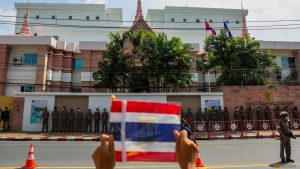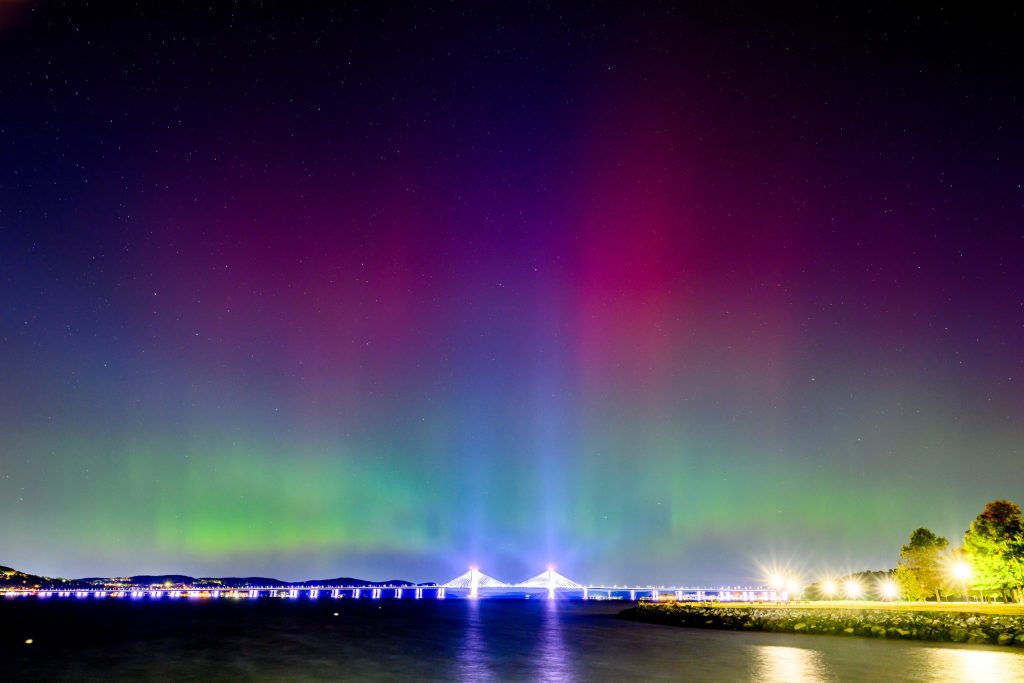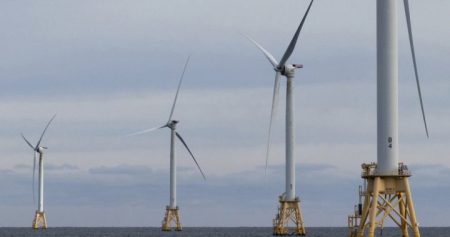The National Oceanic and Atmospheric Administration (NOAA) Space Weather Prediction Center forecasts the potential for geomagnetic storms coinciding with New Year’s Eve celebrations, raising the possibility of aurora borealis displays across parts of the United States. These captivating light shows, typically confined to high-latitude regions within 1,550 miles of the North Pole, including Alaska, could become visible in more southerly locations, offering a rare spectacle for residents of states bordering Canada. Earlier this year, similar geomagnetic storms expanded the aurora’s reach significantly, with sightings reported as far south as Florida, highlighting the unpredictable nature and potential impact of these solar events.
The anticipation of these auroral displays stems from a predicted G3 (Strong) geomagnetic storm watch for December 31st, followed by a G1 (Minor) watch for January 1st. These watches are prompted by a pair of Earth-directed coronal mass ejections (CMEs), bursts of plasma and magnetic field from the sun’s corona. The precise intensity and impact of these CMEs remain uncertain until they approach closer to Earth, at which point spacecraft like NOAA’s DSCOVR and NASA’s ACE can measure their structure and intensity. This inherent uncertainty in predicting CME impact is further compounded by the fact that neither CME is anticipated to be a direct hit to Earth.
Despite these forecasting challenges, NOAA has released predictive maps indicating a low-to-medium likelihood of aurora visibility across a swathe of northern states, spanning from Washington to Maine. This potential viewing zone encompasses parts of over a dozen states, offering a glimmer of hope for aurora enthusiasts. However, it’s crucial to remember that these forecasts are not guarantees; the actual visibility of the aurora borealis remains contingent on various factors, and predictions can change rapidly.
While the prospect of witnessing the aurora borealis excites many, NOAA’s primary focus lies in safeguarding critical infrastructure from space weather impacts. Lieutenant Bryan Brasher, project manager for NOAA’s Space Weather Prediction Center, emphasizes that their mission centers on protecting power grids, satellites, communication networks, aviation, and human spaceflight from potential disruptions caused by solar activity. Although auroras offer a captivating public engagement opportunity, they represent a benign aspect of space weather, secondary to the potential threats posed to technological systems.
For those residing within the potential viewing zone, anticipating a glimpse of the northern lights, NOAA provides a real-time aurora forecast tool on the Space Weather Prediction Center website. This tool offers short-term predictions, approximately 30 minutes in advance, indicating where the aurora might be visible in the immediate future. This resource, while not providing definitive guarantees, offers a valuable guide for those hoping to witness this celestial spectacle.
The potential appearance of the aurora borealis over parts of the U.S. serves as a reminder of the dynamic relationship between Earth and the Sun. While geomagnetic storms can disrupt technological systems, they also offer a breathtaking display of nature’s power, connecting us to the vastness of space and the ongoing solar activity that shapes our cosmic environment. The uncertainty surrounding the aurora’s appearance only adds to its allure, encouraging skywatchers to remain vigilant and hopeful for a glimpse of this elusive and mesmerizing phenomenon.










